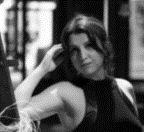Translated from the Turkish by Neil P. Doherty
Starting from childhood, from the day when we first wander out into the street, shoes are our best friends, friends who never leave us, who spend every waking moment with us. They are the unarmed guards of our feet, who keep all harm at bay, who protect and watch over us. Shoes, the humblest of all objects are kept well away from us in our houses. We kick them off rocks, drag them through mud. Trace circles with them in the soil. We batter and scuff them continually. In truth, we torment them.
Shoes are the twins that chase way our loneliness.
The expression “like sisters and brothers” seems to suit shoes more than children. They are more alike than identical twins. Their path, their course is forever the same. When one gets wet, so does the other. When one steps in mud, so does the other. They never quarrel—but instead, walk side by side and stand side by side. They are the most trustworthy, the most agreeable of companions.
Shoes suit the word “companion” best.
Shoes are the coracles of silence. They are boats carried away in the flood. Really, scriptures should speak of them the most: of their patience, their loyalty. Shoes are bound, are faithful to their owners. They know, they recognize them—they take the curves and bends of their feet. They go to death with us. What shoes were on Virginia Woolf’s feet when she put an end to her life? What did Hrant Dink’s shoes feel, lying there on the ground?
Shoes are the most perfect balance of the animate and the inanimate.
Death spells the end of your need for shoes. Sleep and death: journeys undertaken with no shoes. Then, they just disappear silently—as if they never existed. They are no longer able to feel their owner’s warmth. Left alone they too feel the emptiness within them. Some of them wait at home for Godot, while others set out in search of him every day. It’s like they want to preserve the smell and the heat of those feet. For, they too fear being abandoned.
Shoes: two prisoners sharing the same fate.
The child shares the joy of walking with their shoes on, taking the first step into the street, the first step into that different world in them. They protect those tiny feet from cold, dust, mud and from cuts. How indispensable they are, these singular witnesses of each of our adventures. In truth, we can’t really do without them. Yes, we can fare into the street with no watch, earrings, bracelet or hat but never without shoes!
Shoes are the armor feet don in the struggle to survive.
Even our shadow is a fair-weather friend, but our shoes remain with us even at night. For a false-friend and a shadow stay only while the sun shines. There is something tribal about shoes, they display a tribal devotion. We leave them outside the front door, but they do not grow resentful. They have a timid, meek, and shy nature. Like those women who are taken for granted but never complain.
Shoes are two slaves of the one master.
Oh, there are certainly haughty ones among them. And some that are overly given to decoration. High heels nourish an ambition to rise in the world. Others cost as much as jewelry. They, who render the beautiful even more so. There are some that just can’t seem to get along with feet—they pinch, hurt, and draw blood. They are unbiddable, unbendable. There is something tough in the stance of certain boots. They lay down a challenge to all and sundry. How swanky to be striding about in a brand new pair.
Yet most shoes, too, experience nothingness.
Summer shoes are put to sleep in their boxes throughout the winter. Like babies in the cradle. Winter shoes sleep and rest in summer. The Wellington boot was the preserve of the working class. Used in field and garden, building site and sewer. While trainers are designed for the road, for the pavements of the city. How well they suit the gender, the class, the profession, the personality and taste of all those who wear them. But the shoes of the king, of the jester and the peasant are not one. The list is endless: clogs, slippers, galoshes, patent leather shoes, brogues, pumps, stilettoes, peep toe, open toe, crocs, moccasins, pampooties, loafers, kitten heels, espadrilles, winklepickers, creepers…
Every shoe tells its own story.
Playful children’s shoes that hop and skip, sweat and fall. All colorful on the inside and out: red, green, blue, yellow, orange, and purple. The shoes of a child always remain a child. For many women shoes are akin to lovers they passionately want. There is something a little breezy about a woman’s shoes as they step onto the road or path…something provocative in their pointed heels, their laces and buckles. Then there are the tired and faded shoes of old age, dragged in slow steep along the road. Or the nimble shoes of the athlete—always poised to sprint. The shoes of the judge, do they not announce their full and resolute voice? And the shoes of the traveler that say: “What roads I have seen, what things I have lived though”. Here, an old shoe, as it quietly falls apart, pleads not to be abandoned halfway down the road.
Some shoes are militaristic.
At times lined up with soldierly discipline. As if they have an obsession with symmetry. The colonial boots are all for Mussolini, how they love Hitler and the SS too. Even on Švejk’s or Chaplin’s feet they are devoid of any charm. For they hunt, are potent, and yes, they are masculine those black boots that trample, that destroy and that murder in every single war and massacre. Abandoned shoes piled one on top of the other speak in the plainest terms of genocide. The shoes of a hanged politician can still rise up against those left in power.
Shoes are of the lowest caste.
As for slippers, well they are privileged. They roam about the house like cats, are allowed to wander in and out of every room. There are even those who sneak into bedrooms and peep at what is going on there. However, they know how to keep secrets. Unlike wet hair, hot, steamy baths late at night or very early in the morning, bath bowls dropped or taps gushing loudly, they do not betray those who have committed that “delicious crime”.
Slippers are the most voyeuristic, the most deviant members of the shoe colony.
Slippers: reverential geishas. There are indoor slippers, hotel slippers, mosque slippers, hammam slippers, temple slippers…and clanking clogs. Slippers offered to guests recall an Eskimo tradition. It is said they would present their wives to any visitor who came calling.
So many roads to walk, so many shoes to wear out…
So, how many years, months and days does it take for a pair of shoes to wear itself out? How many stories does it write on each of the roads it has wandered, in each of the houses it has entered? What do shoes see in their dreams? Do they feel the desire that lies on the path to the beloved? The endless bliss of eventually arriving at someone’s door, that someone whose shoes will soon stand right beside ours? Or the burning pangs of distance and separation? Do shoes get bored while in prison? For the shoes of prisoners are also imprisoned. Do the shoes of long-term hospital patients itch to leave at the first opportunity?
How much greater than the population of the world is the population of shoes?
It is said the Chinese put very tight shoes on girls’ feet to keep them from growing. In ancient times leather or wooden soled sandals were worn. Those made from papyrus leaves were considered to be sacred relics among the Egyptians. Sumerian soldiers, too, wore something similar. The Assyrians, however, wore boots, and the first heeled shoes and the first shoes with laces are found among them. The shape of Japanese sandals indicated the rank and profession of the wearer. They paid no heed to those ancestors who said “it is not the shoe you must look at, but at the heart”.
Shoes are the storehouse of metaphor.
Sometimes, like children, they play the role of the informant who reveals a crime, who gives away the perpetrator, but this they do unknowingly, reluctantly and with the greatest naivety. Because they love to leave traces in the soil and in the mud. They feel the joy a child who makes potato prints feels. At times they are the creators of happiness. The glass slippers of fairy tales…the glee of children’s special days…the dream that haunts the poor.
Shoes are the harbingers of tradition.
As a mark of respect the host places the guest’s shoes carefully in the direction of departure. Even the most religious of shoes will not be admitted to the mosque; they are always left outside. In the Turkish language the idiom “Mehmet Agha of the Yellow Boots” is used to speak of someone you don’t know, someone you don’t recognize, someone who is no one. To point out that a person is unreliable the idiom “no sturdy shoe he” is called upon—it is as if we blame the shoes and not the wearer! If a dervish’s shoes are upturned, it means he is being penalized for a misdemeanor. He leaves the lodge, passes over sea or river until he reaches another, and only returns when he is forgiven. In place of the dervish, it is the shoes that are punished.
“Shoes upon her feet how quietly my love tips to me.”
I recall folksongs that sing of shoes; some lively and light, others sad and sorrowful. “My shoes are full of sand, you’d need a shovel to scoop them out/To lie beside that coy mistress, you’d need a heart so stout.” Another sings of the fez and shoes among the few belongings left behind by a fallen soldier: “I wonder what is in his bag at all/ a pair of shoes and fez, that’s all”.
Though it is the story of the legendary blind folk musician, Aşık Veysel, that might be the saddest of all. In a village in the province of Sivas, a woman elopes with her lover one night, leaving her husband behind. From the moment she steps out of the house she feels something in her shoe, something that keeps bothering her. When she takes off the shoe she finds a wad of money rolled up inside. Her husband, Veysel, knew very well that she was about to elope. “But,” he said to himself, “when I think of all she did for me, how she washed my clothes, soaped my back and fed me each and every day…it wouldn’t be right to see her go needy in some strange land”.



























0 Comments